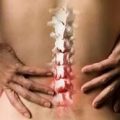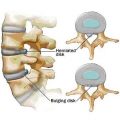Table of Contents
Understanding Bulging Disk
Aside from holding your head, which weighs around 9 to 12 lbs., the neck also performs a lot of functions, such as allowing head movement and protect the internal organs inside the neck. That’s a lot of work and responsibility for a relatively small part of our body, which is why sometimes, stress and pressure take their toll, causing problems in its seven delicate vertebrates.
It’s not uncommon for our neck to encounter problems from time to time, especially pain. Many times, pain goes away with rest. However, for recurring or constant and extreme pain that limits the mobility, it could be a bulging disk in neck, which is a serious problem.
The Neck Bones
The human neck is made up of 7 vertebrates, which are medically called the cervical spine. These bones are connected to muscles, tendons and ligaments. Together, these four made up the spinal column. Also, the ring shape of the vertebrates features hollow canals that allow millions of nerve fibers to pass through.
What is a Bulging Disk?
Between each vertebrate are gel-filled disks that work as shock absorbers and allows movements and mobility for the spine. It also keeps the bones from grinding from each other, while allowing your body to twist, bend and stretch. When these disks are damaged, due to ageing, constant pressure, injury or trauma, it may form a bulge which pushes back to the spinal canal. The bulge usually occurs on one side, either left or right, putting pressure to the nerves, and causing tingling pain on one side of the body.
The pain that comes with bulging disk can be tolerable, but in severe cases, it can cause debilitating pain, which usually runs down to the shoulders, chest, and arms, as well as numbness and/or weakness on fingers. Sometimes, people mistake this pain for having a heart attack.
Though bulging disk and herniated disk are often used interchangeably, the latter refers to a rupture on the disk, causing the gel-like substance from the spinal disk to flow out and affect hurt the surrounding region. Bulging disks, if not treated, develops to become herniated disk, which is a severe version of the condition.
Causes of Bulging Disc in Neck
DDD or Degenerative Disk Disease which may also lead to spinal osteoarthritis is one of the most common causes of bulging disc in neck. Because it works as a shock absorber, the spinal disc absorbs a lot of pressure from our movements and activities, resulting to wear and tear. Other common causes include:
- Obesity
- Strain
- Injury
- Poor posture
- Inactivity
- Smoking
Diagnosis for Bulging Disc in Neck
As with most spinal disc conditions, medical practitioners will conduct a physical exam and request for imaging tests, such as x-rays, CT scan, and/or MRI to further see and understand the condition of the spine and the extent of the problem. To assess the condition of the nerves that have been affected, doctors will request for EMG.
Bulging Disc Treatments
Treatment methods for bulging disc depend on the doctor’s diagnosis. And there are a lot of options to choose from.
For conservative, non-operative and non-invasive treatments, doctors recommend rest and medications to promote the natural healing of the cervical disk.
When it comes to pain relief, doctors prescribe NSAIDs (non-steroidal anti-inflammatory drugs) like ibuprofen. For more severe conditions, they can prescribe narcotic pain relievers or muscle relaxers.
Doctors will also recommend physical therapy treatment to ease up some pressure on the nerves.
For longer term relief for pain, doctors may use cortisone injections such as ESI (epidural steroid injections).
For more severe conditions of course, patients may need surgical operation to threat the herniation. Study shows around 10% of the cases of bulging discs will need surgery.






 I love to write medical education books. My books are written for everyone in an easy to read and understandable style.
I love to write medical education books. My books are written for everyone in an easy to read and understandable style.